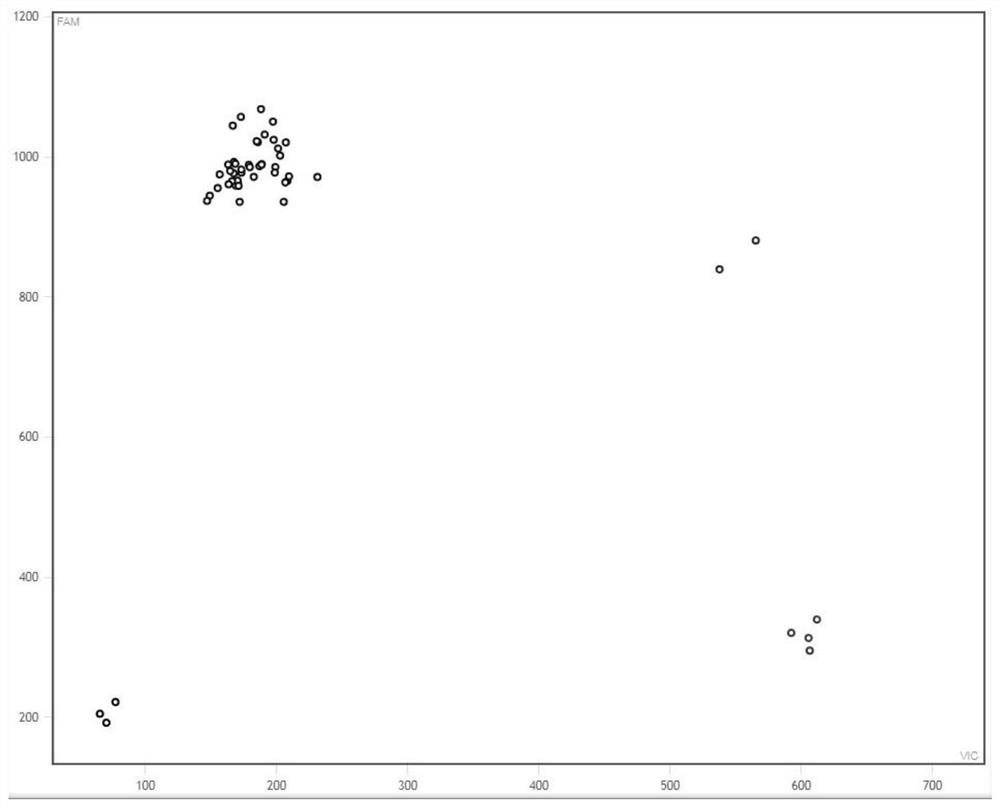SNP marker closely linked to tomato root-knot nematode resistance gene mi1 and its application
A tomato root-knot nematode and anti-root-knot nematode technology, which is applied in the directions of recombinant DNA technology, microbial determination/inspection, DNA/RNA fragments, etc. It can reduce the scale of field planting, reduce the cost of breeding, and shorten the detection period.
- Summary
- Abstract
- Description
- Claims
- Application Information
AI Technical Summary
Problems solved by technology
Method used
Image
Examples
Embodiment 1
[0045] Example 1 Development of closely linked SNP markers with tomato root-knot nematode Mi1 gene
[0046] The development process of the SNP marker closely linked to the tomato root-knot nematode resistance Mi1 gene is as follows: figure 1 shown. According to literature reports, a SCAR marker primer pair Mi23F / Mi23R closely linked to the Mi1 gene was obtained (Gracia B E, Mejia L, SalusM S, et al. A co-dominant SCAR marker, Mi23, for detection of the Mi-1.2 gene for resistance to root-knot nematode in tomato germolasm [J]. Applied Mechanics and Materials, 2013, 486: 323-326).
[0047] 1. Determination of primers: The closely linked molecular marker Mi23 sequence of the Mi1 gene was anchored in the tomato chromosome 6 chromosome 2,320,942…2,320,969bp interval (Gracia B E, Mejia L, Salus M S, et al.A co-dominantSCAR marker, Mi23, for detection of the Mi-1.2 gene for resistance to root-knotnematode in tomato germolasm [J]. Applied Mechanics and Materials, 2013, 486: 323-326)....
Embodiment 2
[0073] Example 2 Application of SNP Marker Tightly Linked to Tomato Root Knot Nematode Resistance Gene Mi1 in Molecular Marker-Assisted Selection of Tomato Root Knot Nematode Resistance Plants
[0074] In order to detect the practicability of the KASP-Mi1 marker of the present invention, the tomato F1 variety material Zofia (Rickswan (China) Seed Co., Ltd.) was purchased, and according to the Zofia phenotype and genotype identification results, it was judged to be a root-knot Nematode heterozygous disease-resistant materials. 90 strains of F2 natural segregation population were produced by F1 natural selfing, and KASP marker detection and disease resistance phenotype verification were carried out on the segregation population (Table 2). The implementation methods of marker detection and disease resistance phenotype verification were the same as in Example 1. Through the detection and analysis of the phenotype and genotype of the segregation population, among the 90 individual ...
PUM
 Login to View More
Login to View More Abstract
Description
Claims
Application Information
 Login to View More
Login to View More - R&D
- Intellectual Property
- Life Sciences
- Materials
- Tech Scout
- Unparalleled Data Quality
- Higher Quality Content
- 60% Fewer Hallucinations
Browse by: Latest US Patents, China's latest patents, Technical Efficacy Thesaurus, Application Domain, Technology Topic, Popular Technical Reports.
© 2025 PatSnap. All rights reserved.Legal|Privacy policy|Modern Slavery Act Transparency Statement|Sitemap|About US| Contact US: help@patsnap.com



